Today, we will tell you about the magical Balinese rice. You will learn about the varieties of rice grown in Bali, how rice is cultivated, and how the harvest is collected. I promise it will be interesting! ? When exploring the traditions, customs, and cultural life in Bali, it is impossible to overlook the topic of rice. Rice is such an essential part of the island that I became curious to learn more about it beyond my simple passing glance.
Rice is the staple food in Bali, and in the local language, it is pronounced as “nasi,” which translates to “food.” However, it’s worth noting that rice means much more to the Balinese people than just sustenance. It is an integral part of their everyday life, history, religion, and traditions on the island. Rice is a significant part of Balinese culture, being the protagonist of stories, myths, and legends. The island of Bali simply cannot exist without rice. So, how does rice grow in Bali?
“Beras Bali” is the type of rice that has been cultivated on Bali for over 2000 years. It is the traditional rice variety believed to possess the healing energy of the island, a miraculous gift from the gods to humans! Balinese traditional rice is renowned for its delicious taste, vibrant color, and aromatic qualities, as believed by the local residents. It is planted by hand and blessed throughout all stages of growth, accompanied by numerous beautiful ceremonies held in its honor.
To cultivate the magical Balinese rice, no chemical fertilizers are used. Instead, a bit of volcanic dust, sunlight, and wind are relied upon. The process also involves the use of magical Balinese soil, the sacred water from holy lakes, blessed by the lake goddess Devi Danu, the blessings of the gods, particularly the rice goddess Devi Sri, and the love of the entire community. This is what Balinese rice is made of.
Buffaloes are also essential for plowing the land, while ducks help in cleaning the field after the harvest, removing old roots and pests. Afterward, the new rice seedlings are mixed with water from the lake, warmth, and sunlight. And the rice culture continues to thrive. Balinese rice is believed to heal all ailments, invigorate life force, and contain all the necessary elements for the body. In ancient times, it was even believed that consuming rice alone could maintain perfect harmony within the body.
Balinese rice, a gift from the gods, has been cultivated for centuries. Balinese farmers possess profound knowledge on how to manage it. They know how to maintain the soil without artificial fertilizers, how to synchronize rice growth with the forces of nature, and how to wisely control the entire rice cultivation cycle.
Now, let’s dive into the most interesting part. I will tell you how traditional Balinese rice grows. The rice harvest can only be collected twice a year. Rice cultivation takes 210 days, which corresponds to the length of the Balinese year calculated according to the lunar calendar known as Pawukon. Important Balinese holidays, such as Galungan and Kuningan, occur with the same periodicity on the island. Shortly before rice planting, the fields have a stunning appearance. Although they are devoid of rice, they are flooded with water and resemble enormous mirrors reflecting the clouds.

Now, cows and female buffaloes take the stage in the rice cultivation process. With their help, the fields are plowed. Rice planting is done manually. Can you imagine? The energy of labor is already being infused into each grain of rice. Although tractors are sometimes used, not everyone has access to this option.
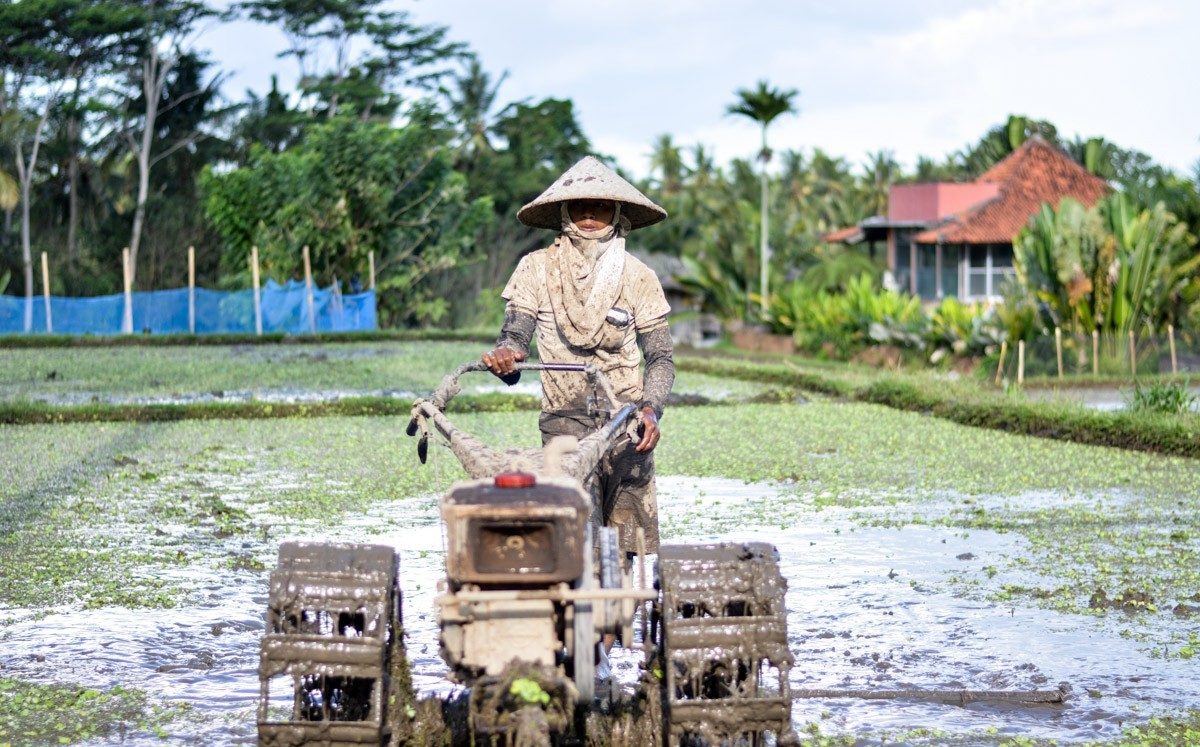
Rice seedlings are planted in orderly rows arranged in a way that ensures optimal lighting and sufficient space for growing panicles. There is a belief that the distance between the panicles should be as wide as a duck.

The distance between the panicles should be as wide as a duck.
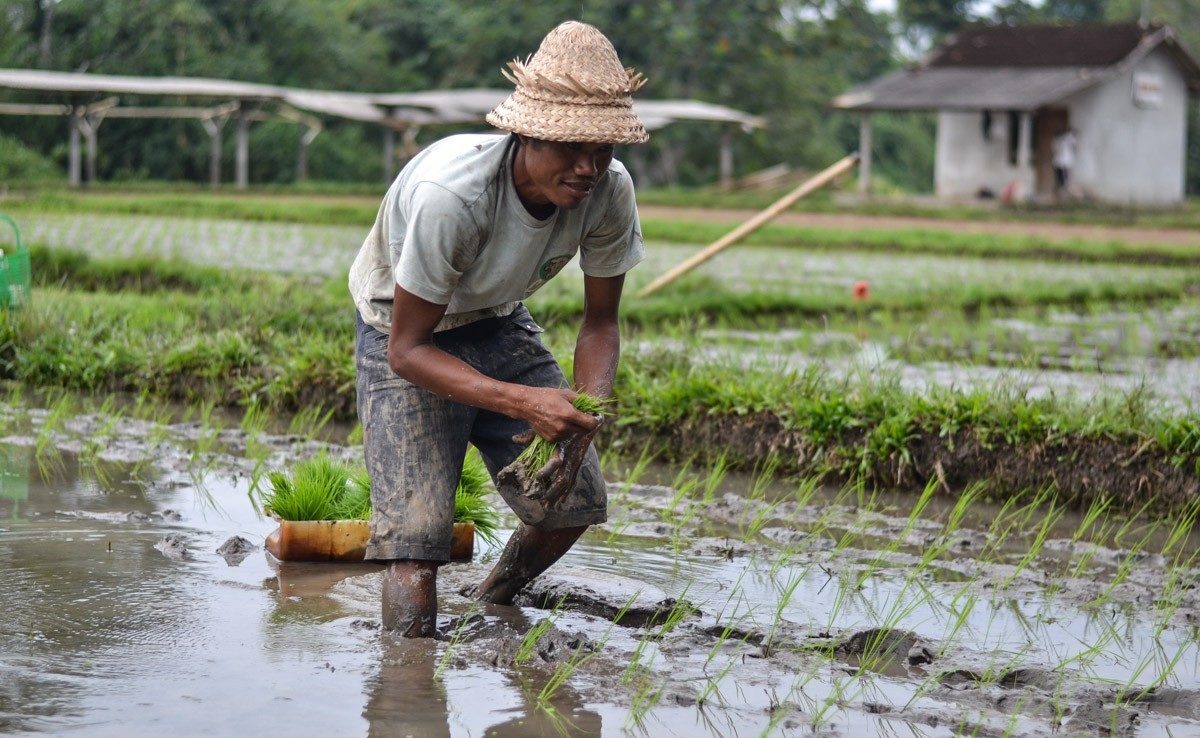
After a few days, tender, young, yellow-green shoots of the young rice start to sprout.
It is a dangerous time for the farmers. Birds love to feast on these delicious shoots. Scarecrows are placed in the fields, bells are hung, and bamboo deterrents are used. The farmers themselves watch over the fields, shout at the birds, and chase them away.
For a few more months, the young shoots grow taller and taller, turning greener and filling with strength derived from the sun and sacred water from the mountain lakes.

Afterward, the rice ears are filled with sunlight, turning golden-yellow and heavy. The ears bow under their weight. This indicates that the rice has ripened, and it is time to harvest it.
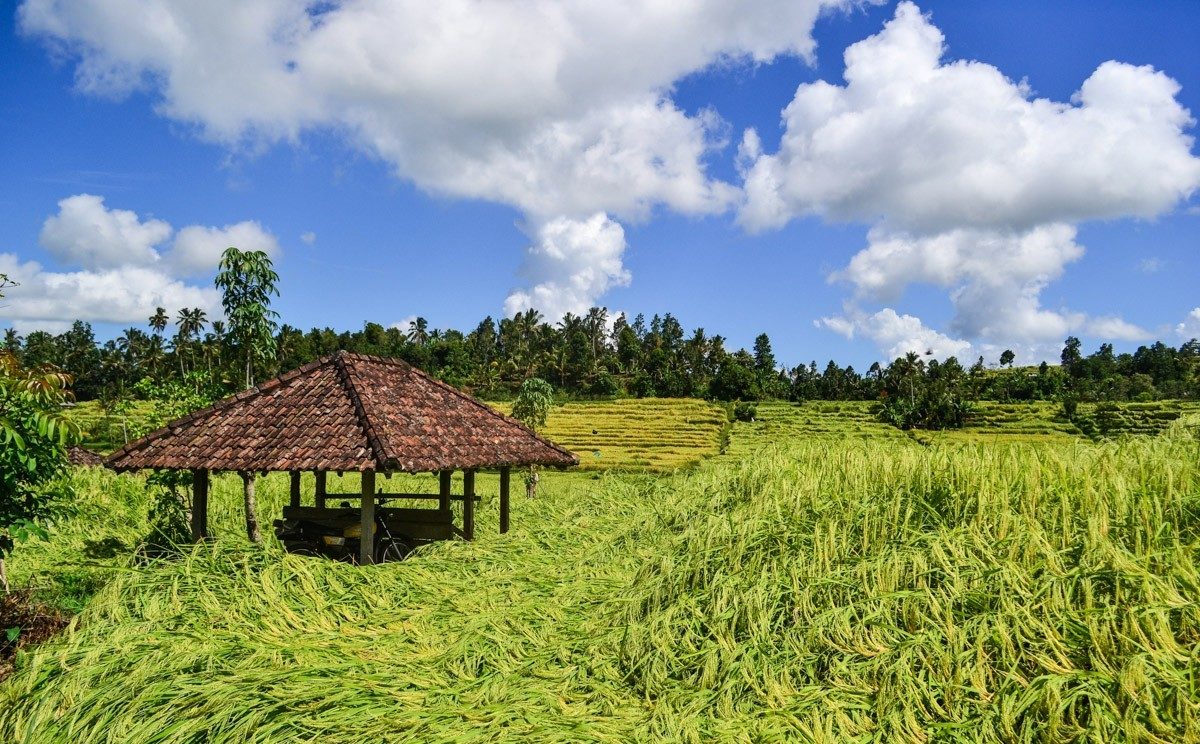
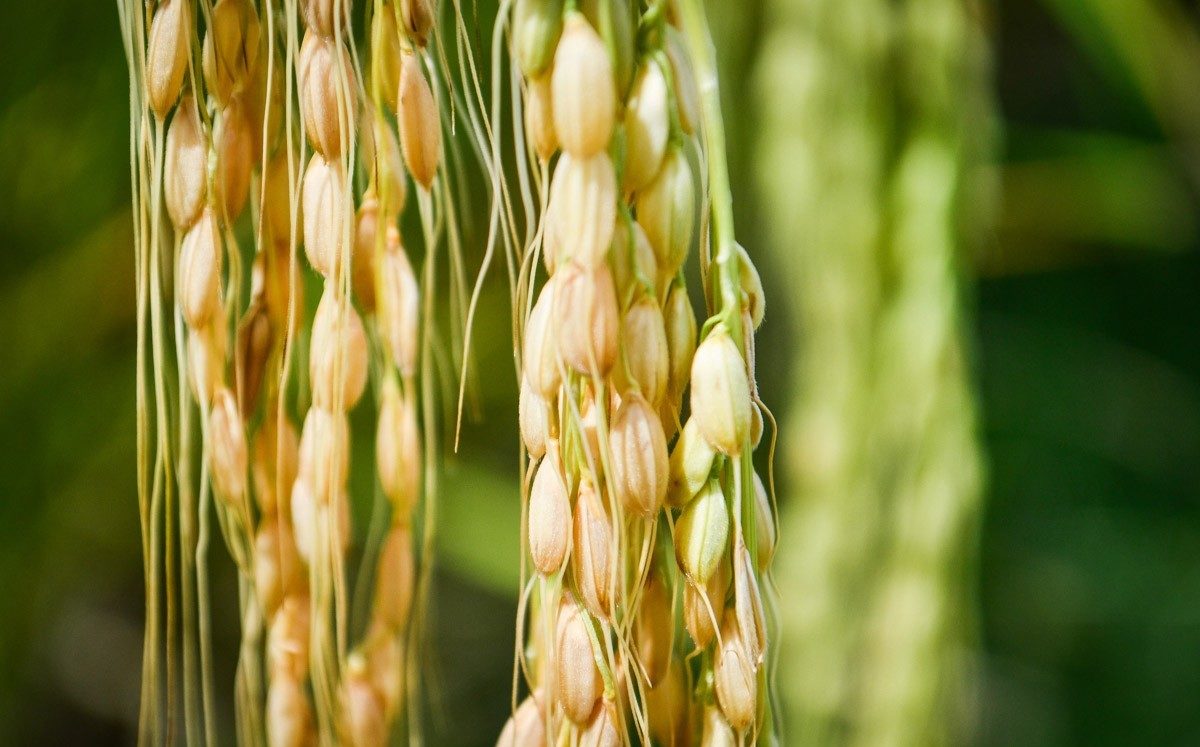
Afterward, the farmers begin a lot of work. They cut the rice ears with sharp sickles. The harvested shoots of mature rice are beaten against a wooden board. This process is called “threshing.” In the initial stage of processing, the rice husks, which protect the grains from damage, are removed.
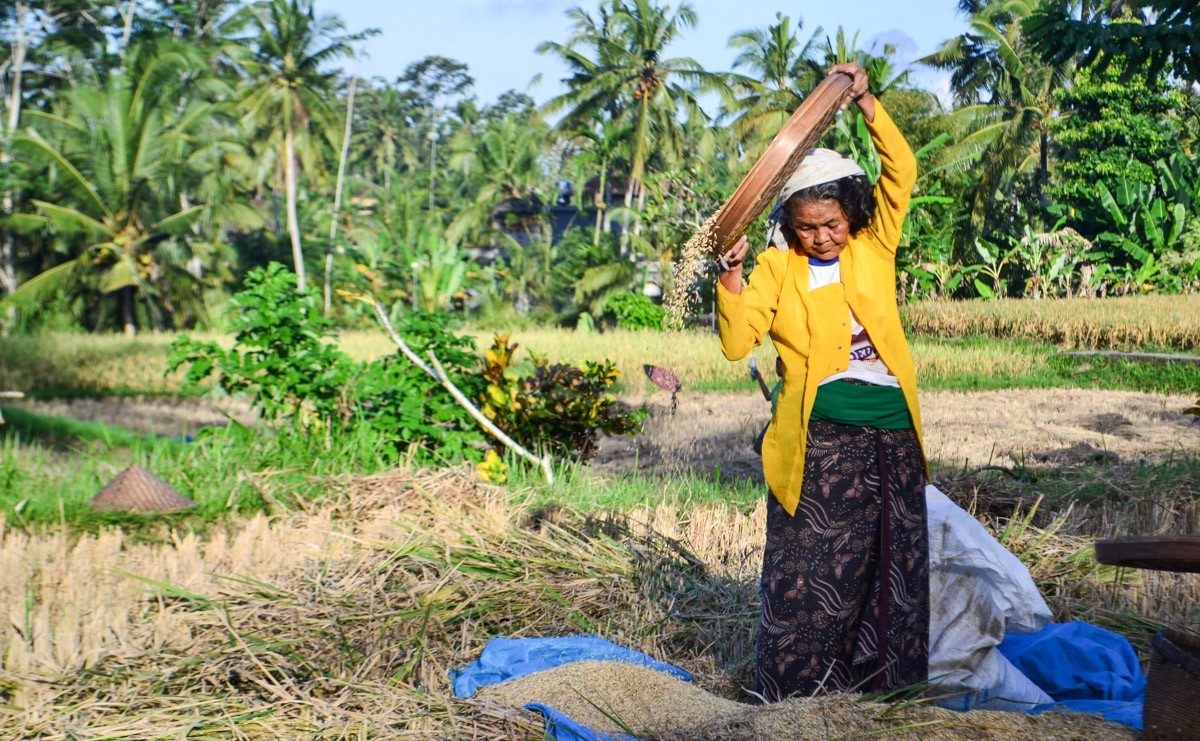
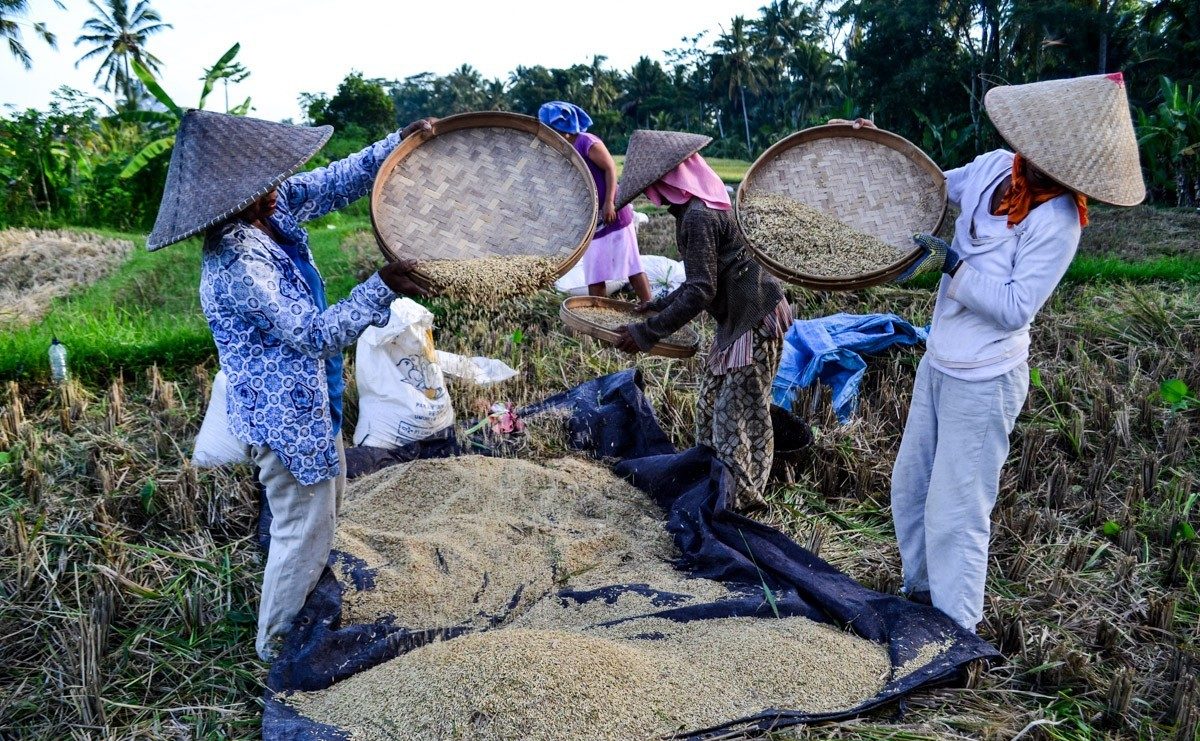
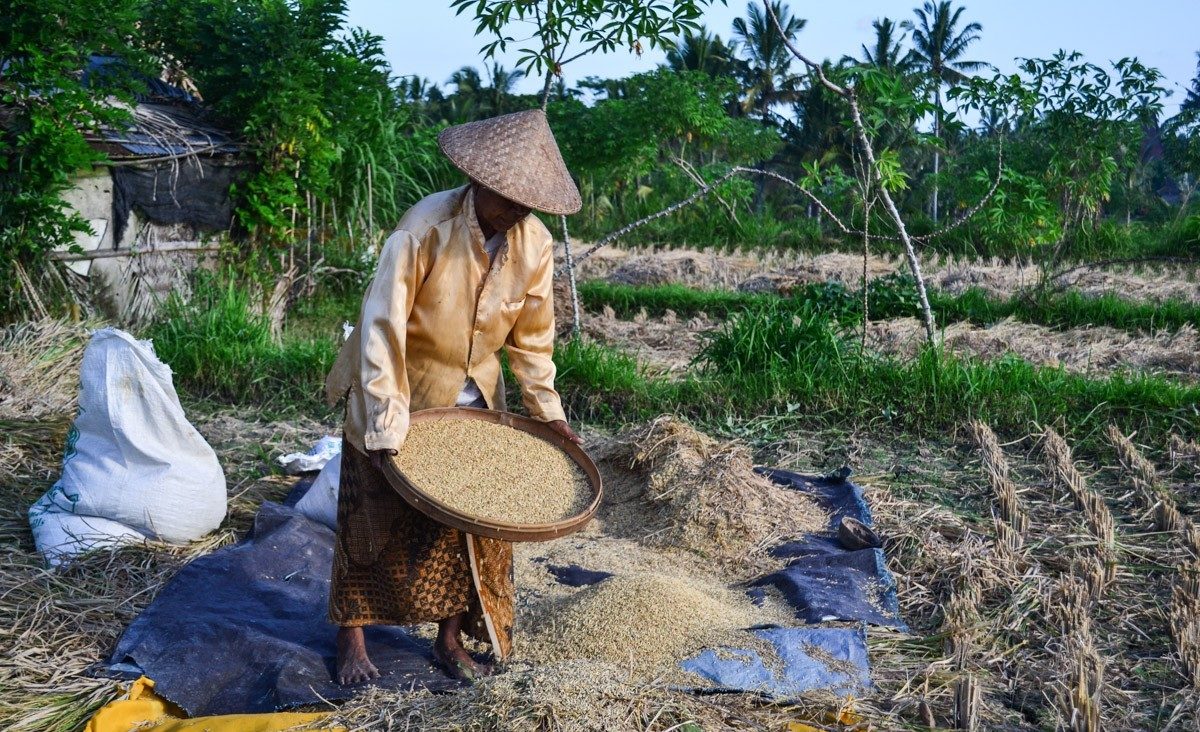
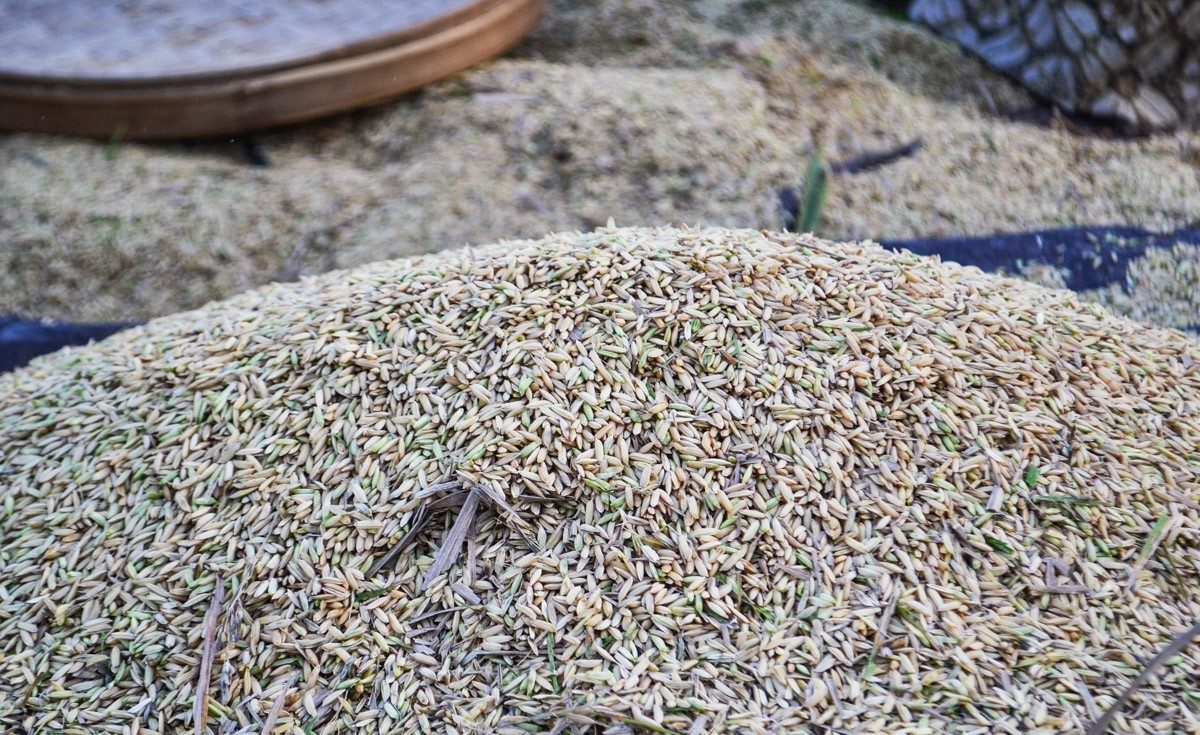
After the harvest, the fields need rest. Typically, they are given about 1.5-2 months to rejuvenate. The remnants of rice stalks are burned and covered with water, allowing the rice stems to decompose and become part of nature. At the same time, a group of warriors from the invisible front arrives in the fields – ducks and geese. They are released in large flocks onto the resting fields to eat harmful insects, consume old rice grains, and clean the field for new cultivation. While the rice fields are resting, they stop producing rice, but instead become a lively gathering place for many fish, frogs, and eels. In the past, farmers even sold this fish and had additional income.
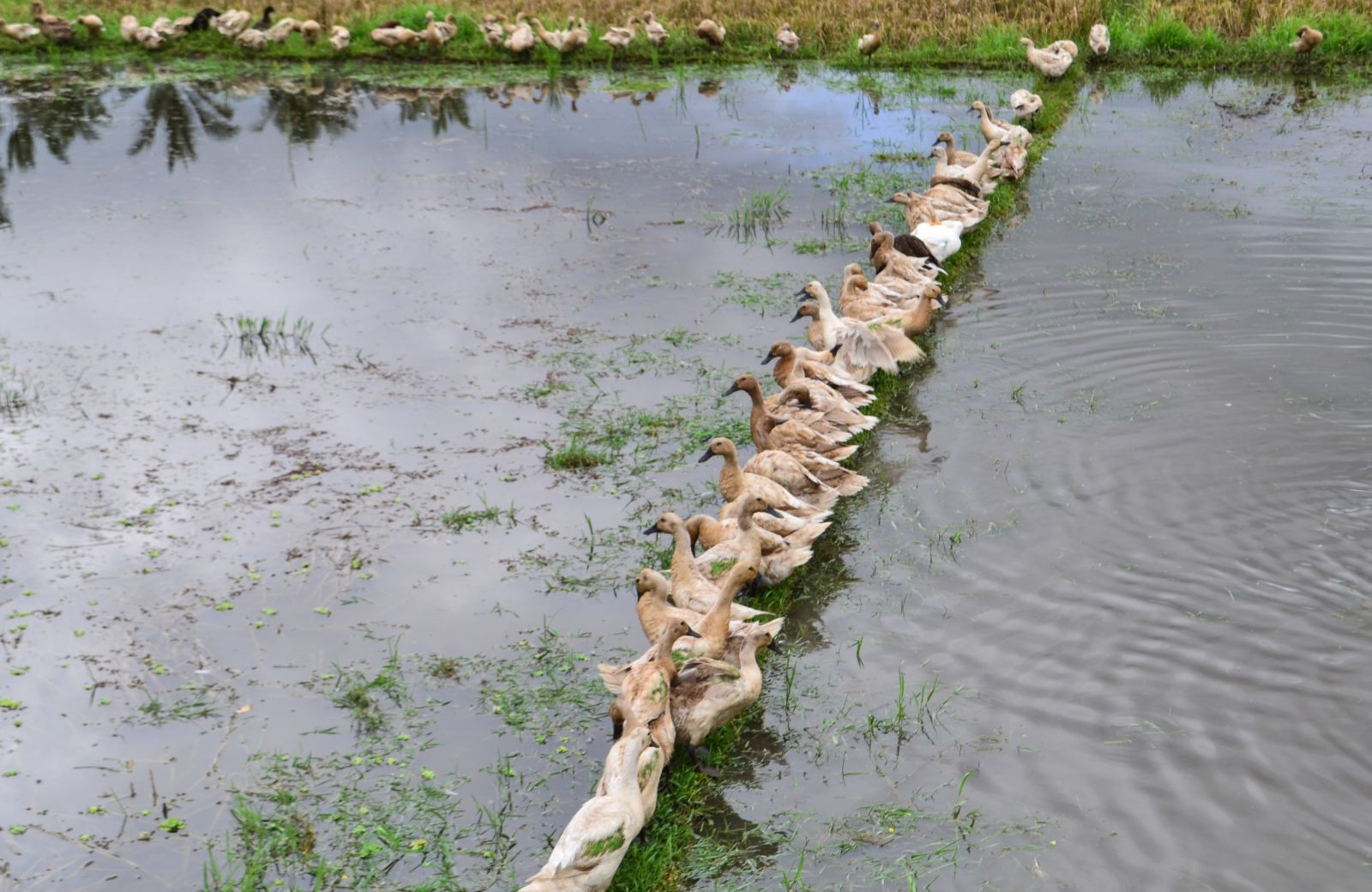
Rice fields in Bali have been a treasured asset of the island for a long time. After all, rice has been cultivated in Bali for over 2000 years and is considered a magical gift from the gods to humans. Every family that owned a plot of land and cultivated rice was considered wealthy. Rice was a living currency that could always be sold and its acquisition was always important. Rice is the staple food in Bali, and without rice, a dish is no longer a dish. Let me tell you about the Balinese menu. A large pot of rice is cooked in the courtyard, accompanied by a small soup made from spinach, onions, and tofu. In other words, there should be plenty of rice, and the rest can vary. Therefore, those who have fields and grow rice have always been considered fortunate.
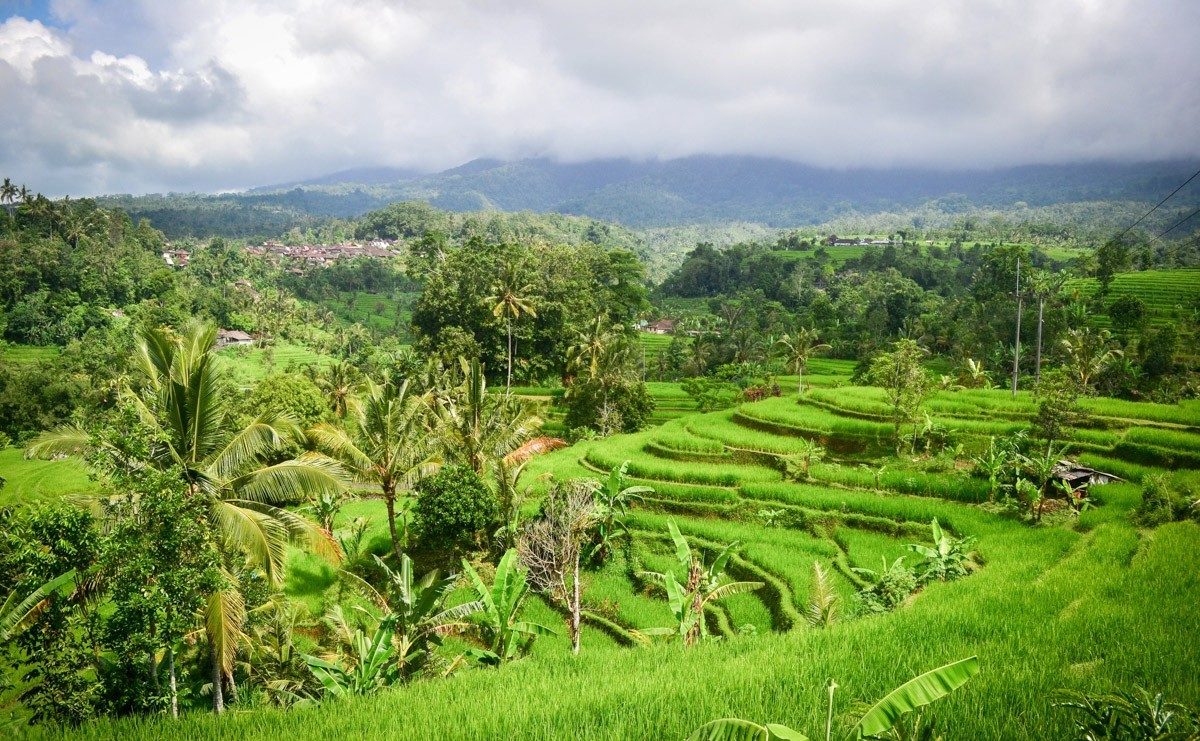
On certain days according to the lunar calendar, Balinese people conduct special ceremonies to ensure that the rice grows well, becomes nourished with strength, and lovingly feeds all the inhabitants of the island. These ceremonies include the Water Blessing Ceremony, which nourishes the rice; the Pre-Planting Ceremony, during which prayers are offered for a happy and benevolent new life on the rice stalks; the Growth, Flowering, and Harvesting Ceremonies. Rice fields are nourished not only by the sacred water and sunlight but also by the kind intentions of humans. Now I understand why Balinese rice is considered magical. Altars to the rice goddess Dewi Sri are placed in the rice fields and terraces. Dewi Sri is the rice goddess, the goddess of fertility and harvest, the patroness of rice fields, and the guardian of rice barns. She oversees all the rice fields on the island, participates in the rice-growing process, and helps farmers achieve a bountiful harvest.

It is believed that rice feeds on feminine energy, and Dewi Sri actively participates in this process by infusing the rice grains with her divine power. On important days according to the lunar calendar, during different stages of rice growth, images of Dewi Sri made from rice stalks in the form of two triangles tied in the middle are hung on altars in the fields. As I mentioned before, magical rice and holy water are gifts from the gods in Bali.
The goddesses responsible for these gifts are highly revered by the people. Water is distributed across the rice fields through the Subak irrigation system. The water comes directly from the goddess Dewi Danu, from her magical, healing, freshwater lakes – Batur, Bratan, Buyan, and Tamblingan. The water in these lakes is considered sacred; it heals ailments, bestows life, prosperity, and eternal youth.
During their ceremonies, the Brahmins use water from these divine Balinese lakes to bless the people after prayers. After the water is blessed, the Brahmins give people white Balinese rice, which they apply on their foreheads, temples, and chests for divine protection and blessings.
Regarding the current rice cultivation in Bali, for over a thousand years, Balinese rice has been grown as I described earlier. All the rice fields on the island of Bali were plowed by water buffalos and planted manually, without the use of fertilizers other than natural ones. However, challenging times came to Bali when the demand for rice increased several dozen times. In the 1950s, Indonesia had to import around one million tons of rice annually from neighboring countries like Thailand and Vietnam. After 1965, President Suharto set “independence” as one of his main goals.
The oil revenues in the late 1960s were invested in creating bureaucracy. Bali became the primary target for the so-called “Green Revolution.” The International Rice Research Institute in the Philippines developed a “new rice” – a genetically modified “high-yield” rice variety resistant to diseases and insects.
The “new rice” could be obtained in much larger quantities from one hectare compared to traditional rice, and the harvest could be collected three times a year. In 1940, Indonesia had a population of around 40 million, three million fewer than Japan at that time. Half a century later, Indonesia’s population had surpassed Japan’s population by almost twice, reaching 200 million people!
The new rice was introduced into production to feed the growing population of Indonesia. In Bali, the new rice was planted from 1970 to 1979. As a result, rice production increased by 50 percent, and the harvest became so abundant that in the 1980s, Indonesia even began exporting hundreds of thousands of tons of rice to other countries. The widespread adoption of the “new rice” in Southeast Asian countries led to rice culture becoming more vulnerable to pests and diseases dependent on chemical fertilizers.
The Indonesian government did not give much importance to the role of clean water in rice cultivation. They decided it was easier to plant the “new rice,” which grows faster and requires less care. Farmers had to abandon the traditional farming system, leading to chaos in the established water distribution scheme through the Subak irrigation channels.
Moreover, widespread outbreaks of insect pests occurred, and the soil in the rice fields started deteriorating due to the use of chemical fertilizers. The new rice completely overturned the traditional rice farming practices in Bali. The new rice required a significant amount of inorganic fertilizers, which the farmers had to acquire somewhere. It turned out that the new rice was not very resistant to insect pests (despite being developed to resist them), and farmers started using pesticides to combat this problem.
“In the old times, before the Green Revolution, a farmer could live year-round on their rice field. The land in Bali was always very fertile due to volcanic ash, which provides natural phosphate. During the intervals between harvests when the rice fields were flooded, fish would thrive in them, which peasants could eat and even sell. And now, the land and water have been polluted by fertilizers, which create an unhealthy ecosystem for the inhabitants of the rice fields” (says farmer Wayan). Traditional Balinese rice is still grown in Bali but in small quantities. For example, in the vicinity of Tabanan, on our beloved Jatiluwih rice terraces, traditional Beras Bali rice is cultivated.
We are always happy to share the magic of Bali Island with positive people!
Sincerely, Bali Open Group, authors of the blog baliopen.org

